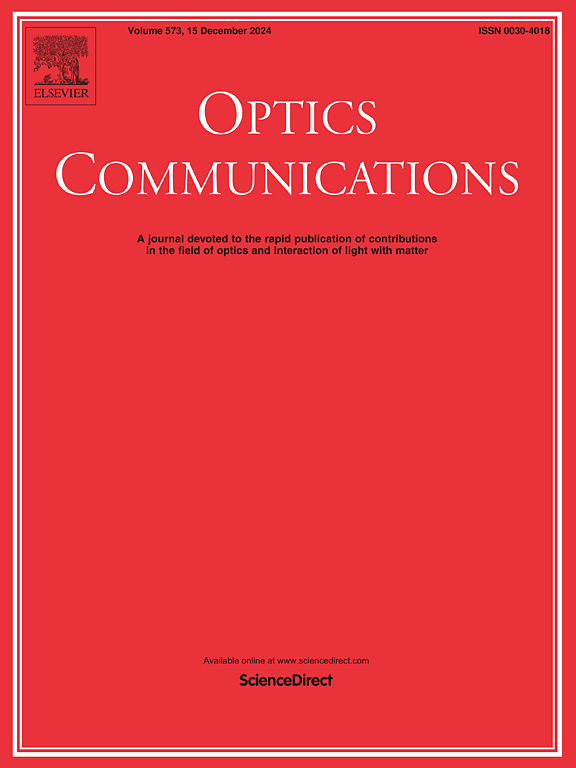Nanoblocks-enhanced tunable plasmonic sensor based on MIM waveguide with double independent resonators
IF 2.2
3区 物理与天体物理
Q2 OPTICS
引用次数: 0
Abstract
A compact plasmonic sensor structure with silver nanoblocks enhancement is presented. The standard structure is based on the metal-insulator-metal (MIM) waveguide with a silver baffle, an elliptic ring cross cavity and a square frame cavity with a gap. The transmission characteristics of the structure are analyzed by the finite element method. The simulation results show that the structure generates triple Fano resonances. By changing the structural parameters of cavities, there is a good linear relationship between resonance wavelength and the effective length of resonator. Furthermore, the Fano resonances produced by various resonators can be tuned independently by the refractive index of the medium. The standard structure can achieve a sensitivity of 2760 nm/refractive index unit (RIU). By adding silver nanoblocks to the standard structure, the sensitivity of the modified structure reaches 3090 nm/RIU, which is 11.95 % higher than before. In addition, based on the independence of the resonator, the designed structure can realize the simultaneous detection of glucose solution and glycerol. The concentration sensitivities reach 388.7 nm∗ml/g and 403.3 nm∗ml/g, respectively.
求助全文
约1分钟内获得全文
求助全文
来源期刊

Optics Communications
物理-光学
CiteScore
5.10
自引率
8.30%
发文量
681
审稿时长
38 days
期刊介绍:
Optics Communications invites original and timely contributions containing new results in various fields of optics and photonics. The journal considers theoretical and experimental research in areas ranging from the fundamental properties of light to technological applications. Topics covered include classical and quantum optics, optical physics and light-matter interactions, lasers, imaging, guided-wave optics and optical information processing. Manuscripts should offer clear evidence of novelty and significance. Papers concentrating on mathematical and computational issues, with limited connection to optics, are not suitable for publication in the Journal. Similarly, small technical advances, or papers concerned only with engineering applications or issues of materials science fall outside the journal scope.
 求助内容:
求助内容: 应助结果提醒方式:
应助结果提醒方式:


